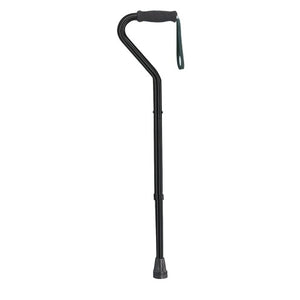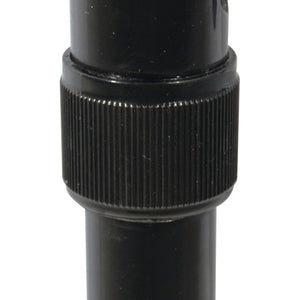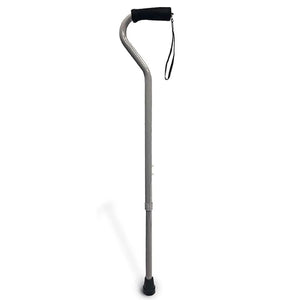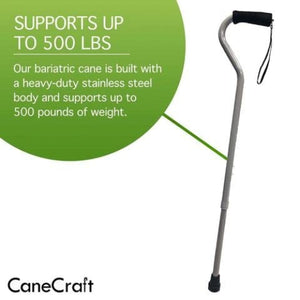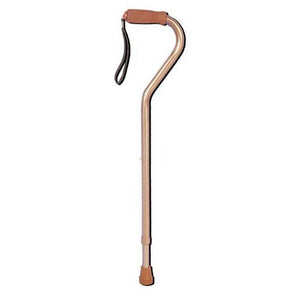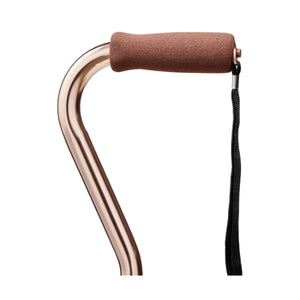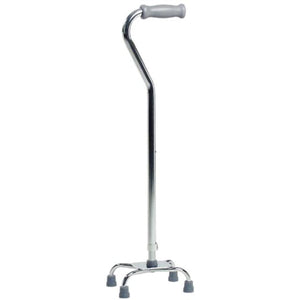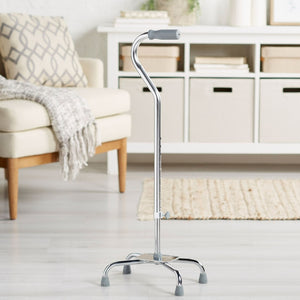Using a cane can be helpful if you have pain or trouble walking because of your leg, knee, or hip. It gives you support and helps you stay balanced when you are on your feet. But if you have never used a cane, it might initially feel confusing.
Let's explore how to walk with a cane for balance! With some good tips on staying safe and a bit of practice, you will be walking confidently in no time. But first, you must understand how to select the ideal cane.
How to Choose the Best Cane for Balance?
Selecting the right cane is crucial for comfort, stability, and support. These guidelines can help you in choosing the ideal cane.
1- Height
Maintain a straight posture and keep your arms at your sides. The wrist crease and the top of the cane should line up. If the cane is too tall or short, it won't provide optimal support and may lead to discomfort or imbalance.
2- Material
Canes come in various materials, including wood, aluminum, and carbon fiber. Consider your preferences and needs. Aluminum is lightweight and strong, while wood may be more elegant but weighs more. Carbon fiber offers strength with minimal weight.
3- Handle
Select a handle that is stable and comfortable to hold onto. Ergonomic grips, offset handles, and derby handles are common varieties. Try out multiple options to find the one that feels the most supportive and natural.
4- Adjustability
Some canes have height-adjustable settings to modify the cane to your requirements. It is helpful if you need clarification about the appropriate height or if your height fluctuates over time.
5- Tip
Pay attention to the cane's tip, which directly impacts stability and traction. Rubber tips are standard and provide a good grip on most surfaces.
Tips to Walk Safely with a Cane
Now, let's get to know how to walk with a cane safely and comfortably:
1- Choosing the Right Cane
The height of your cane is essential for balance and appropriate support. When standing straight, the cane's top should align with your wrist's crease. It won't provide the right level of support if it's too short or too tall.
2- Holding the Cane
Hold the cane with the hand opposite your weaker or injured side. It allows your stronger side to support more weight.
3- Gripping the Cane
With your fingers, hold the cane grip. Having your thumb positioned above will guarantee a firm grip. But avoid overly tight gripping; maintain a relaxed hand to prevent strain.
4- First Step
Move the cane forward in line with your forward step. The cane should contact the ground before your injured or weaker foot touches it. This pattern assists in creating a firm foundation for stability before shifting your weight.
5- Weight Distribution
As you step forward with your weaker or injured leg, lean on the cane to support most of your weight. It reduces the strain on your weaker side and provides additional balance.
6- Keep It Close
When you walk, keep the cane near your body. Avoid swinging it too far out to the side, disrupting your balance. Keeping it close allows for better control and stability.
7- Smooth Movements
Aim for smooth and fluid movements while walking with the cane. Avoid sudden jerks or leaning heavily on the cane, leading to instability. Pay attention to keeping your rhythm and pace constant.
8- Look Ahead
Instead of looking down at your feet, maintain your gaze forward. You can avoid pitfalls and keep your balance by looking ahead. Additionally, it encourages proper posture, which is necessary for stability.
9- Practice, Practice, Practice
Practice walking with the cane in a safe and familiar environment before venturing into public spaces.
Walks should be short at first, then longer and more complicated as you go. It enables you to develop competence and self-assurance in using the cane.
10- Take Your Time
Walk at a moderate and comfortable speed for you. It's not necessary to hurry when getting used to using the cane. As needed, take pauses and pay attention to your body's cues.
Read how to walk confidently without a walker.
Visit MoovKart for the Best Canes!
Ready to find the perfect cane to support you for better mobility? MoovKart has a wide selection of walking canes and sticks that offer comfort, stability, and style for your needs.
People Also Ask!
Q1. How can I choose the best cane for me?
A1. Consider factors like height, grip comfort, and weight capacity. MoovKart offers a variety of options to suit your needs.
Q2. Is using a cane complex for beginners?
A2. With practice and proper technique, walking with a cane becomes more accessible and comfortable.
Q3. Can people of all ages use a cane?
A3. Yes, canes are suitable for individuals of all ages who require additional support with walking or balance.
Q4. Which Leg Goes First When Using a Cane?
A4. When using a cane, always walk carefully by moving the cane in sync with your opposite leg. For example, if your left leg is injured, hold the cane with your right hand.


